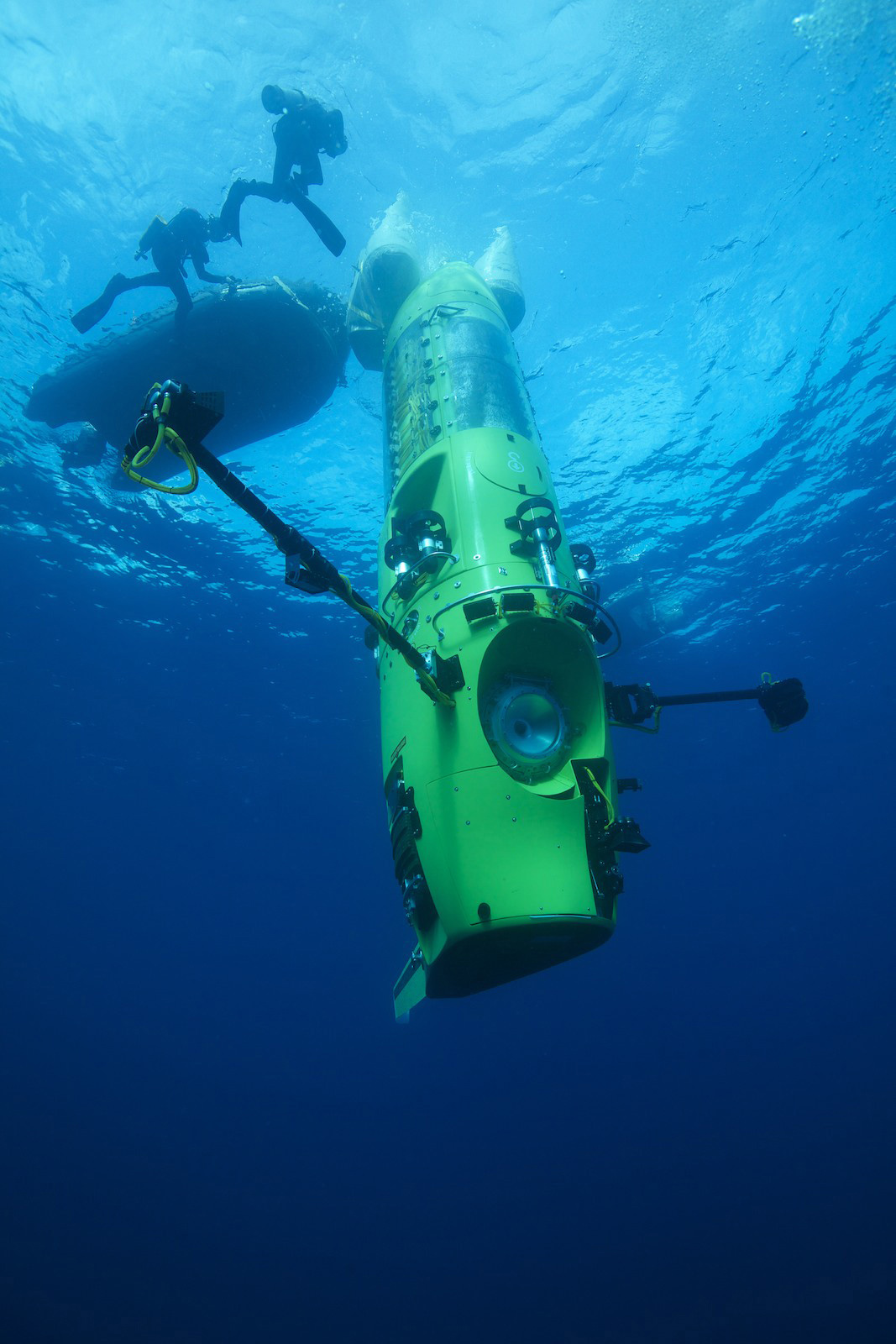My review of Deepsea Challenge 3D, the new National Geographic documentary about James Cameron's historic March 2012 dive to the bottom of the deepest part of any ocean on the planet in a one-of-a-kind sub he co-designed himself, is on The Dissolve today. When he isn't busy being a real-life Steve Zissou, Cameron is still one of my favorite filmmakers. And I didn't even like Avatar all that much.
I know: He annoys you. His dialogue is clunky. He should've been nicer to Kate Winslet during the production of Titanic 18 years ago, when the world press was writing every day that he was going to bankrupt 20th Century Fox and rooting for him to fail. He should've played it a little cooler up at the podium on Oscar night 1998, when he won Best Director for the film that was absolutely, positively going to end his career, except that it became the biggest worldwide hit in the history of cinema.
But you know what? Hollywood, and the world, are full of people who have 100 percent of Cameron's ego and one percent of his talent. And the guy who wrote and directed The Terminator, Aliens, The Abyss, Terminator 2: Judgment Day, and Titanic -- as well as the admittedly problematic True Lies and Avatar -- can do whatever he wants.
Whatever He Wants turns out to be designing revolutionary submarines and risking his own life to take them to the most inhospitable climate on Earth, where no rescue would be possible if something went wrong, to show us all what's down there and remind us how little we know of the ocean that covers most of our planet. Wrinkle your nose at him if you must.







